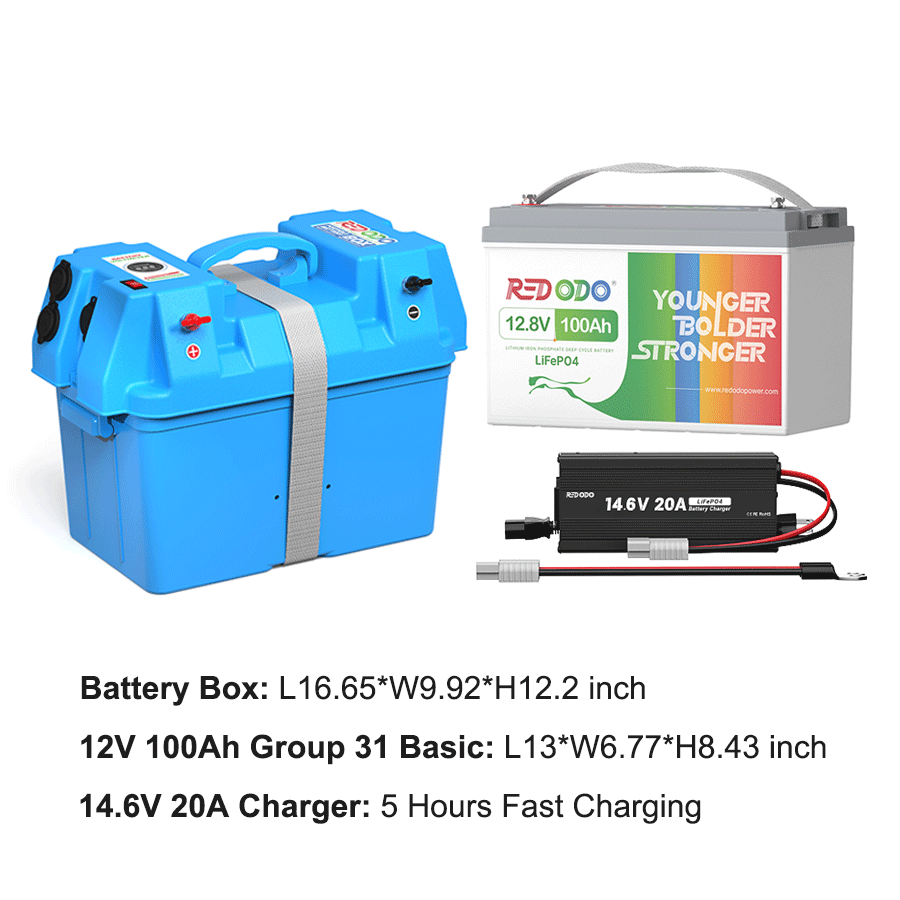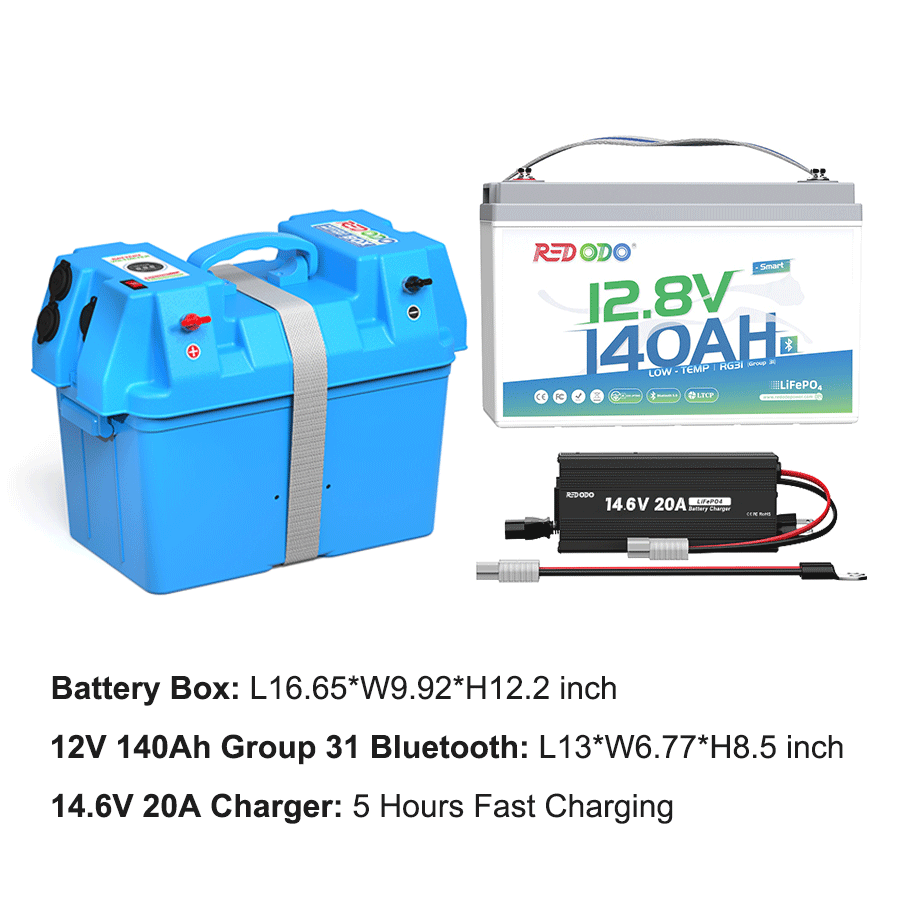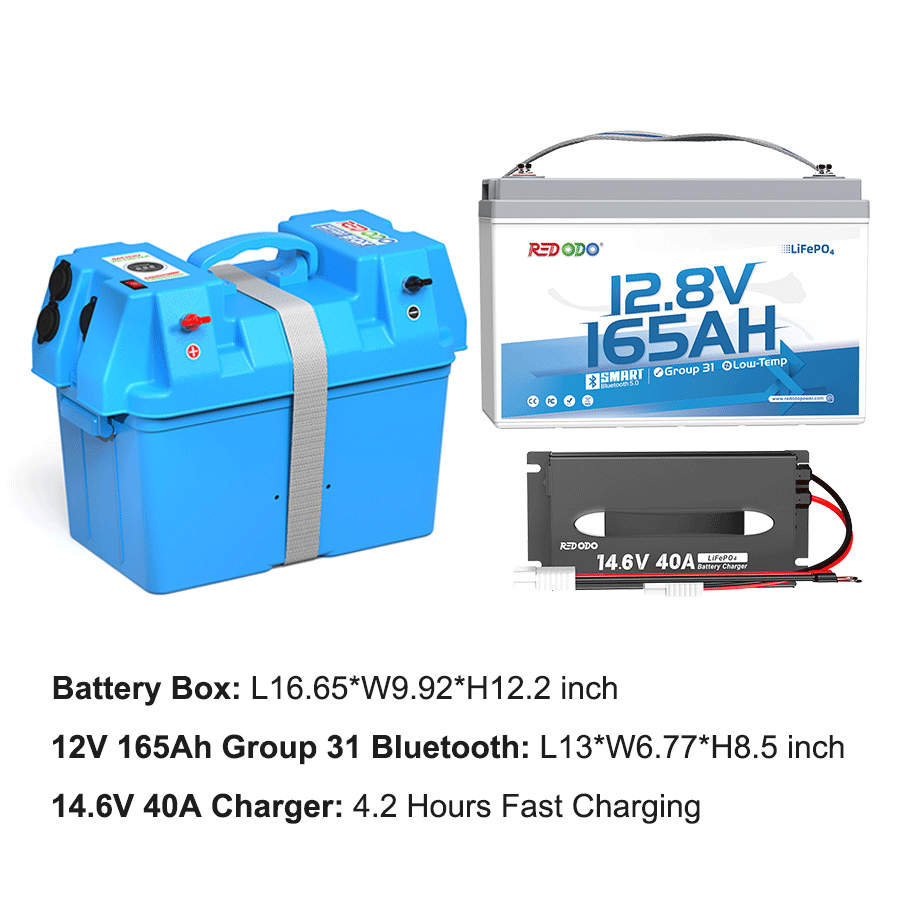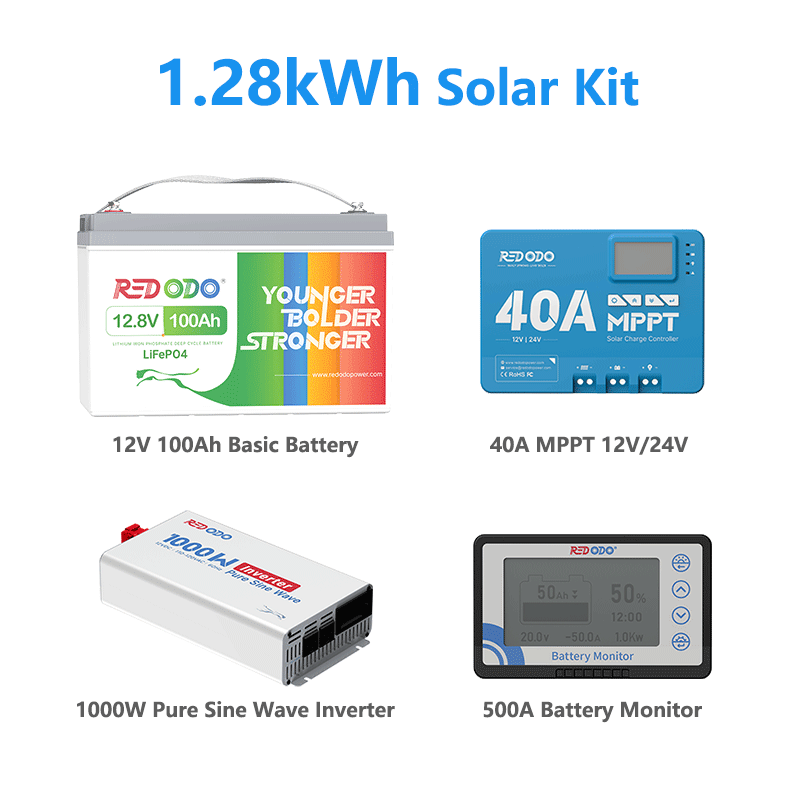Build A DIY Solar Power Generator with Lithium Battery
If you’re interested in cutting electricity costs, gaining backup power, or living more sustainably, building a DIY solar power generator is one of the most practical projects you can take on. By using a lithium battery as the storage core, you can design an efficient, and long-lasting generator that provides reliable power.
But how to build your own solar generator for home or small devices? This full guide walks you through everything you need to know about DIYing your own solar generator, from selecting the key components to detailed operation steps.
Key Takeaways
- Estimate Your Energy Needs
- Pick Solar Panels
- Select Lithium Battery
- Add a Battery Box
- Add a Charge Controller
- Install an Inverter
- Include a Monitor
- Mount and Organize all Components
- Wire with Safety in Mind
- Test Your Solar System
- Plan for Future Expansion
Table of Content
What Is A DIY Solar Generator?
A DIY solar generator is a portable power system that you build yourself using solar panels, a battery, and other solar accessories. Instead of relying on fuel like traditional gas-powered generators, it captures sunlight through solar panels, stores the energy in a battery and converts it into usable electricity for your devices and appliances.
Unlike ready-made solar generators sold on the market, a DIY version lets you design a system that fits your specific needs. For example, you might build a small portable generator for camping trips and outdoor events, or a larger setup that serves as backup power for your home during outages.
With a DIY solar power generator kit or individual components, you can decide how much capacity, wattage, and portability you want.
Why Build Your Own DIY Solar Generator?
A DIY solar generator provides great convenience and flexibility, making it an attractive option for both renewable energy beginners and homeowners seeking more independence from the grid.
The Benefits of Building Your Own Solar Generator:
- Cost Savings: Commercial solar generators can be expensive. Building your own often cuts the price by 30–50%.
- Customization: A DIY solar power generator lets you size the system to fit your exact energy needs, from charging phones to running large appliances.
- Upgrade Flexibility: Want to expand battery capacity later? Add more solar panels? With a DIY setup, upgrades are easier!
- Learning Experience: Understanding how solar energy works empowers you to troubleshoot and expand your system in the future. A successful DIY also gives you a sense of achievement.
- Sustainable Living: Solar generators produce clean energy, reduce your carbon footprint, and give you independence from the grid.
Essential Components of a DIY Solar Power Generator
To build a DIY solar generator for home or portable use, you’ll need several core components: Solar panels, a solar battery with battery box, a charge controller, and an inverter.
1. Solar Panels
Solar panels are the foundation of your generator, converting sunlight into electricity. For a DIY solar generator, monocrystalline panels are often the best choice because they provide higher efficiency and perform better in limited space compared to polycrystalline ones.
2. Solar Battery
Solar battery is the heart of your DIY solar power generator, it stores the solar energy so you can use it anytime, day or night. While lead-acid batteries were once common, lithium LiFePO4 batteries have become the preferred option for its efficiency, long lifespan, and consistent voltage output.
Redodo’s lithium solar batteries are specifically ideal for solar energy storage. These lithium batteries feature EV-grade cells for safety and durability, advanced BMS protection against overcharge and temperature extremes, and a 10-years’ service life.
If you want to build a portable solar generator, using lithium batteries with battery box can make your solar generator easier to carry and move, while also protecting your batteries from external damage.

3. Solar Charge Controller
A solar charge controller sits between the solar panels and the battery, regulating the voltage and current that flows into your battery bank. Without it, your battery could be overcharged or damaged by fluctuations in solar input.
MPPT (Maximum Power Point Tracking) controllers are recommended over PWM (Pulse Width Modulation) models, because they harvest more power from the panels.
4. Inverter
Most household appliances and electronics run on AC power, while solar panels and batteries supply DC power. The inverter bridges this gap by converting DC into AC.
For a DIY solar generator, you should choose a pure sine wave inverter, as it produces clean and stable power that’s safe for sensitive electronics like laptops and medical devices.
When sizing your inverter, pick one with at least 20–30% more capacity than your largest expected load to ensure smooth operation.
5. Battery Monitor
A battery monitor gives you real-time insight into your generator’s performance. It shows critical data such as battery voltage, current, state of charge, and remaining capacity, so you always know how much power you have left. Some advanced monitors even include Bluetooth connectivity, allowing you to track everything from your phone.
6. Wiring, Fuses, and Safety Components
Though often overlooked, proper wiring and protection devices are critical to any DIY solar generator. Using the right wire gauge prevents overheating, while fuses and circuit breakers protect your system from short circuits or overloads.
Always place fuses between the battery and inverter, as well as between the solar panel and charge controller. A neat wiring layout with clear labeling will also make troubleshooting and future upgrades much easier.
Step-by-Step Guide to Build a DIY Solar Power Generator
Step 1: Estimate Your Power Needs
The first step is to calculate how much electricity you’ll use daily. Write down the devices you plan to power—such as a laptop, LED lights, or a mini fridge—and record their wattage.
Multiply the wattage by the number of hours you’ll run each device to get watt-hours (Wh). Add these up for your total daily energy requirement. This number will determine the size of your battery and solar panel system.
Step 2: Choose the Right Battery
LiFePO4 batteries are the best choice because they last longer, are lighter, and provide more usable capacity than lead-acid.
For a DIY portable solar generator, a 12V 100Ah deep cycle battery is enough. For whole home energy storage, choose multiple 12V lithium batteries or a 48V battery model.
If your daily usage is 360Wh, a 12V 50Ah lithium battery (640Wh capacity) would cover your needs with extra room for efficiency losses.
.png)
Step 3: Select Solar Panels
Next, size your solar panels so they can recharge your battery each day. Divide your battery capacity by your region’s average sun hours to get the panel size needed. Round up to 150–200W for reliability.
Use the formula to calcular the panel size:
Solar Panel Watt (W) = Battery Energy (Wh) / Peak Sun Hour (h)
Example: 640Wh battery ÷ 5 sun hours = 128W minimum
Step 4: Add a Solar Charge Controller
A charge controller sits between the solar panels and the battery. It regulates current, prevents overcharging, and improves efficiency. For a 200W solar panel with a 12V battery, a 20A MPPT charge controller would be sufficient.
Step 5: Install an Inverter
Since most household appliances run on AC power, you’ll need an inverter to convert DC power from the battery. For electronics like laptops or fans, a 500–1000W pure sine wave inverter works well. For larger appliances like a fridge, consider a 2000W pure sine wave inverter or higher.
Step 6: Wire All Components Together
Now that you have your main components, it’s time to connect them.
Installation Notes:
- Use the correct wire gauge for your system’s current and keep wiring neat and secure inside a battery box. This makes your generator safer and easier to maintain.
- Mount the charge controller close to the battery bank, and connect the battery terminals (positive and negative) correctly.
- Connect the inverter to both the battery and the charge controller. If a battery monitor is used, install the monitor with a shunt between the battery and the inverter.
- Install the solar panels in an area that receives maximum sunlight, such as on your lawn or the roof of your cabin, and wire them properly to the charge controller. Make sure to keep the solar panels covered to prevent generating electric current.
- Add fuses or breakers between each major component.
- Test small loads first before plugging in larger devices.
If you prefer tutorial video, check out this:
Redodo DIY Solar Power Generator Kit
If you want to skip the hassle of sourcing components one by one, the Redodo DIY Solar Power Generator Kit is a great place to start. Redodo offers three kit options: 1.28kWh, 1.79kWh, and 2.1kWh, to match different energy needs, whether you’re powering small off-grid cabins, RV trips, ham radios, or backup systems at home.
Pair these with Redodo’s high-quality lithium solar batteries, and you’ll have a reliable, efficient, and safe solar power station that you can assemble with confidence.
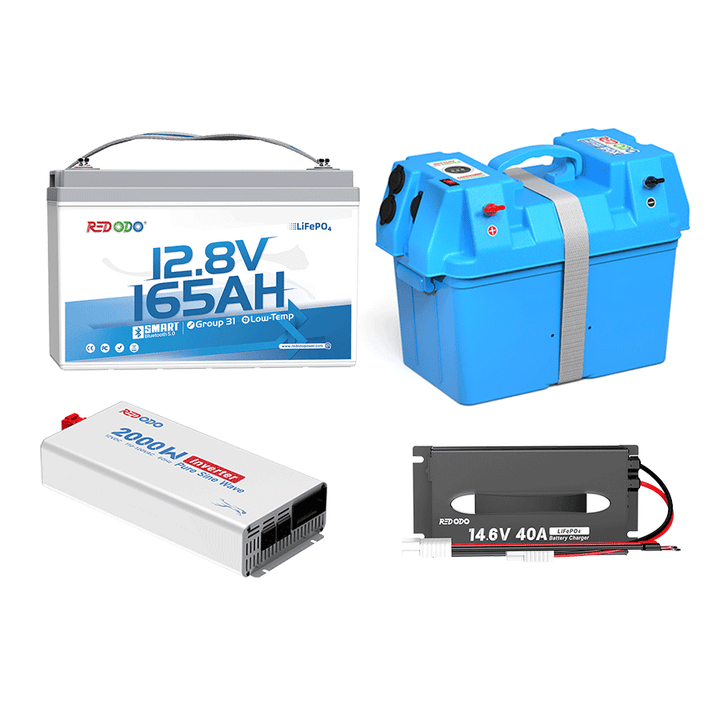
View the 2.1kWh Solar Kit | Explore More Options
DIY Solar Power Generator for Home Use
While portable solar generators are great for camping and road trips, many people are now building DIY solar generators for home backup. These systems can:
- Power essential appliances during outages.
- Run refrigerators, lights, fans, ham radios, and even Wi-Fi routers.
- Scale up to support partial off-grid living.
For home use, consider:
- Larger battery banks (100Ah–400Ah). For example, 16 units of 12V 100Ah battery in 4 series and 4 parallel for a 20.48kW system.
- More powerful inverters (2000W+).
- Roof-mounted or ground-mounted solar arrays.
Even a small system can provide peace of mind during blackouts, and it can reduce your utility bill if integrated into a grid-tied setup.
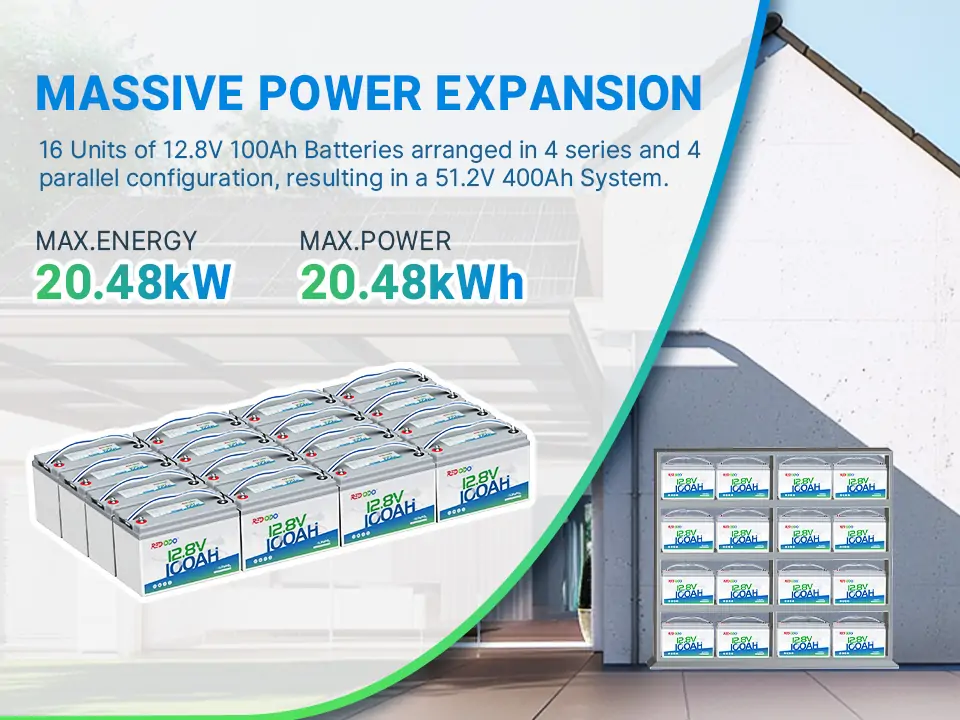
FAQs about DIY Solar Generators
How much does it cost to build a DIY solar generator?
Depending on size, costs range from $400 for small portable setups to $2,000+ for larger home systems.
Can I build a DIY solar generator without an inverter?
Yes, if you only plan to run DC devices like 12V lights or USB chargers. For AC appliances, you’ll need an inverter.
How long will a DIY solar generator last?
With a lithium battery, expect 8–10 years of use with proper care. Solar panels last 20–25 years.
Can I power my whole house with a DIY solar generator?
A single generator can handle essentials, but to power an entire house continuously, you’d need a large solar system with multiple batteries and panels.
Conclusion
Building your own DIY solar power generator with lithium battery is one of the most rewarding projects for anyone interested in clean energy, cost savings, and self-reliance. You’ll need the right components: solar panels, charge controller, lithium battery, and inverter. By following a step-by-step guide, you can assemble a perfect solar setup that meets your unique off-grid or backup power needs.
Read More:
DIY Off-Grid Solar System with Lithium Batteries
What is the Best Solar Battery for Home?

Redodo

Redodo
Join Redodo
Related Post

How to Store a Deep Cycle Marine Battery for Winter?

What Size Solar Panel Do I Need to Charge A 12V Battery?

Light Up Your Christmas with Redodo: LiFePO4 Batteries Holiday Deals

How to Choose the Best Battery for Van Life?

